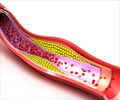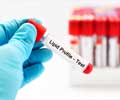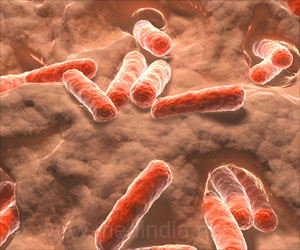Transfer of a gene that produces a mutant form of good cholesterol provides significantly better anti-plaque and anti-inflammation benefits than therapy using the “normal” HDL gene…
Transfer of a gene that produces a mutant form of good cholesterol provides significantly better anti-plaque and anti-inflammation benefits than therapy using the “normal” HDL gene, according to a mouse study conducted by cardiology researchers at Cedars-Sinai Medical Center and reported in the Oct. 3 issue of the Journal of the American College of Cardiology.
Apolipoprotein A-I is a naturally occurring component of normal HDL (high-density lipoprotein), the “good” cholesterol that circulates in the blood stream. Apolipoprotein A-I Milano is a mutant form, which was originally found in a small number of individuals in Italy who appear to be protected from cholesterol-related heart disease. Researchers are studying the possibility of treating vascular inflammation and plaque buildup through the transfer of protective genes.“There has been uncertainty and controversy about whether apo A-I Milano is a better form of HDL than the “wild type” (regular) apo A-I in terms of protective effect against atherosclerosis and vascular inflammation, which are tied together,” said Prediman K. Shah, M.D., director of the Division of Cardiology and the Atherosclerosis Research Center at Cedars-Sinai.
“We used a unique approach to do a head-to-head comparison, which allowed us to conclusively ascertain the differences between the two genes. Our study demonstrated that A-I Milano gene transfer is much more effective in reducing plaque and vascular inflammation than the normal (wild type) form of apo A-I,” said Shah, the article’s senior author.
Compared to control, wild type apo A-I gene transfer led to about a 25 percent decrease in the amount of plaque buildup in the animals’ aortas and other vessels. Apo A-I Milano gene transfer resulted in a 65 percent reduction. The amount of gene product (protein) produced by each gene was identical, measured in the blood and in the plaque.
The experiments were conducted in female mice bred to lack the apo A-I gene and the apo E gene. Without these genes, they develop very high cholesterol levels and arterial plaque and are incapable of producing their own apo A-I.
“Any apo A-I that these mice have will come from our gene transfer, making the experimental design very clean,” Shah noted.
Advertisement
To deliver the gene to the arterial wall, the researchers used a “signal molecule” when they put the genes into the bone marrow. The signal molecule selectively goes into immune system cells called macrophages, which go into the arterial wall.
Advertisement
Shah, who holds the Shapell and Webb Family Endowed Chair in Cardiology at Cedars-Sinai, has been studying apo A-I Milano in its various forms for about 13 years. He and his colleagues developed a synthetic version of the protein and conducted animal studies at Cedars-Sinai that led to human trials at the Cleveland Clinic in which intravenous injections were found to shrink plaque in human coronary arteries.
Source-Newswise
SRM











